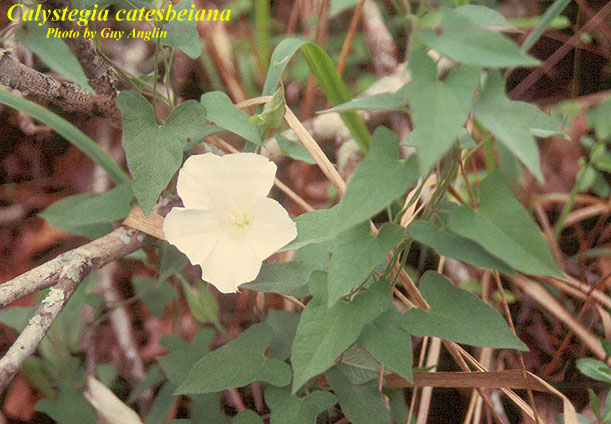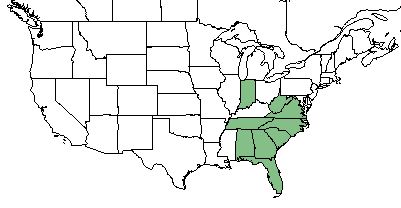Difference between revisions of "Calystegia catesbeiana"
(→Conservation and Management) |
(→Conservation and Management) |
||
| Line 41: | Line 41: | ||
==Conservation and Management== | ==Conservation and Management== | ||
| − | ''C. catesbeiana'' is listed as endangered by the Florida Department of Agriculture & Consumer Services, Division of Plant Industry. <ref name "USDA Plant Database"/> | + | ''C. catesbeiana'' is listed as endangered by the Florida Department of Agriculture & Consumer Services, Division of Plant Industry. <ref name= "USDA Plant Database"/> |
==Cultivation and restoration== | ==Cultivation and restoration== | ||
Revision as of 15:57, 16 May 2018
| Calystegia catesbeiana | |
|---|---|

| |
| Photo by the Atlas of Florida Plants Database | |
| Scientific classification | |
| Kingdom: | Plantae |
| Division: | Magnoliophyta - Flowering plants |
| Class: | Magnoliopsida - Dicots |
| Order: | Solanales |
| Family: | Convolvulaceae |
| Genus: | Catystegia |
| Species: | C. catesbeiana |
| Binomial name | |
| Calystegia catesbeiana Pursh | |

| |
| Natural range of Calystegia catesbeiana from USDA NRCS Plants Database. | |
Contents
Taxonomic Notes
Synonyms: Calystegia spithamaea; Calystegia sericata (House) Bell; Convolvulus sericatus House
Subspecies: Convolvulus spithamaeus Linnaeus var. pubescens;
Description
C. catesbeiana is a perennial forb/herb and vine of the Convolvulaceae family native to North America. [1]
Distribution
C. catesbeiana can be found in the southeastern corner of the United States. [1]
Ecology
Habitat
C. catesbeiana proliferates in longleaf pine savannas, marsh edges, and openings in dry to dry-mesic montane forests. [2]
Conservation and Management
C. catesbeiana is listed as endangered by the Florida Department of Agriculture & Consumer Services, Division of Plant Industry. [1]
Cultivation and restoration
Photo Gallery
References and notes
- ↑ 1.0 1.1 1.2 USDA Plant Database https://plants.usda.gov/core/profile?symbol=CACA101
- ↑ Weakley, A. S. (2015). Flora of the Southern and Mid-Atlantic States. Chapel Hill, NC, University of North Carolina Herbarium.